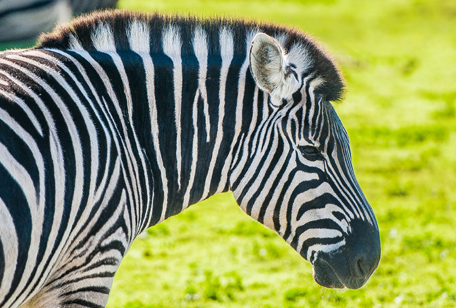
Equus quagga burchellii
Southeastern countries of Africa
Near Threatened
White with Black Stripes OR Black with White Stripes?
The Burchell’s zebra stripes widen towards the flanks and rear of the zebra’s body. Between the bolder, black striping, there are faded brown stripes. Each zebra’s striping pattern is unique, like a human’s fingerprint. Scientists have long debated whether the zebra is white with black stripes or black with white stripes. All fur growth originates from follicles that contain pigment-generating melanocyte cells. White fur has those melanocytes deactivated, forming the striping pattern.
Social Groups
Zebras typically form polygynous family groups; a single adult stallion will mate with multiple mares to produce offspring. This group will stay together for reproductive stability. Numerous groups in any one range may join together for short periods of time before breaking off into their own social groups.
Migration
Burchell’s zebra are considered a Plains zebra and migrate annually, based on the tracking of resource abundance across the seasons. Zebras follow the long grass that grows after the rains, and move to maximize intake of food of sufficient quality while minimizing time spent in habitats where they may encounter predators.
